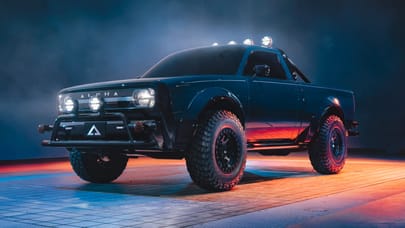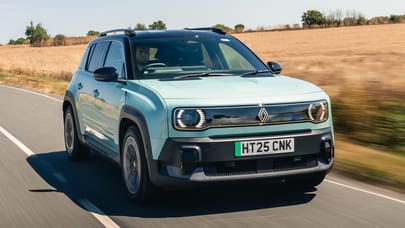

Willie J Holley III is Detroit born and bred. His father worked for General Motors, driving forklifts in the factories that beat out the industrial rhythm of Motown. In his day, Motor City was producing four of every five cars sold in the world. People moved from all over America to work here, the home of the moving assembly line. But, over the years, the tempo has slowed. Heavy industry is disappearing and Detroit's decay has been prolifically reported. But Willie isn't giving up just yet. In a small corner of the city, in a place where GM once styled cars of the future, he and his colleagues have a new factory. But this time it's not making Camaros or pickup trucks. This place has a new rhythm. It moves to the tiny beat of a wristwatch.
Words: Dan Read
Advertisement - Page continues below
/* Style Definitions */ table.MsoNormalTable {mso-style-name:"Table Normal"; mso-tstyle-rowband-size:0; mso-tstyle-colband-size:0; mso-style-noshow:yes; mso-style-priority:99; mso-style-parent:""; mso-padding-alt:0cm 5.4pt 0cm 5.4pt; mso-para-margin:0cm; mso-para-margin-bottom:.0001pt; mso-pagination:widow-orphan; font-size:12.0pt; font-family:Cambria; mso-ascii-font-family:Cambria; mso-ascii-theme-font:minor-latin; mso-hansi-font-family:Cambria; mso-hansi-theme-font:minor-latin; mso-ansi-language:EN-US;} But what chance do they have in a place like this? If you believe some of the more gloomy reports, Detroit is a hopeless wasteland. Abandoned. Broke. The population has dropped from 1.8 million in the Fifties to 684,000 today. Unemployment has nearly doubled in the past 10 years. The entire city was declared bankrupt in July. And sure, some houses have crumbled. Many streetlights are unlit. But this isn't some ghost town. The Big Three carmakers were one blow from utter death, but they adapted and moved on. People still get up, make breakfast and go to work. Drive around the city, and among the empty lots you'll spot pockets of new life. Start-ups. Converted lofts. Hipster stores. Detroit is on an upswing. Just look at people like Willie and his employer Shinola, a brand-new watchmaker breathing life back into the city.

"Business is still here in Detroit," says Willie, on a quick break from his regular 7-to-5 shift. "I believe it's been a big deal for the media," he says. "But it's just news. As far as work's concerned, it's business as usual." As an assembly line manager, Willie looks after the 10 or so people putting together quartz movements using parts shipped from Switzerland. "I work with the engine of the watch," he says. "We build it here. It's the main component, with everything put around it". Right now he's working on the 715 calibre for the Brakeman, a good-looking centrepiece in Shinola's excellently styled range. With its cushion-case and minimalist markers, it could be mistaken for a stone-cold Seventies classic.
Advertisement - Page continues below
Shinola officially launched earlier this year, but Americans of a certain vintage already knew the name. Shinola was once a brand of shoe polish, defunct since 1960, though its name lived on thanks to an old saying: "You don't know s**t from Shinola". It has a certain ring. And it worked: the company's first run of 2,500 Runwell watches sold out in 10 days. But it's not just watches - the portfolio also includes retro bicycles (the Bixby cruiser/city bike is particularly lovely), leather bags, notebooks, a shoeshine kit including a re-issue of the old polish and even Shinola cola. All with a trademark vintage feel. And people can't get enough of the stuff, says CEO Steve Bock. "Today we have the capacity to manufacture 500,000 watches per year," he says. "It's early days, but we could expand to over a million watches in this one facility."

And at a time when US producers - especially homegrown carmakers - are moving production overseas, the idea of good ol' American-made goods is obviously going down well. But why Detroit? The company has no roots here. Many would look at the frankly terrifying headlines and drive out of town, fast. "The idea of making watches in the US, and Detroit specifically, resonates very well," says Steve. "And for all the right reasons: creating jobs, creating potential." Of course, this makes for a nice story, and creates a buzz around a start-up business in a hugely busy marketplace. But what about the hard commercial reality? Is it worth the risk? "There's always risk in starting a new business, it doesn't matter whether it's in New York, LA or Detroit," says Steve. "If we were choosing a base today, we would still come to Detroit. Obviously it has its challenges, but there's a wonderful DNA in this city."

It's a DNA Shinola is keen to inherit. It's even moved into two buildings once central to the car business here. The newly opened retail store is in an old Willys Jeep warehouse, refurbished to hipster standards with golden hardwood and bare metal, while the watch factory lives in the monolithic Argonaut building, once home to GM's design centre (the place where the original Chevy Corvette was styled, among other things). This is where the watches are assembled under the scrutiny of master watchmaker Stefan Mihoc, starting with the Swiss movement, which arrives as about 50 tiny components. Once it's been put together, it moves down the line and the face is placed on top. Then the hands go on before it goes to the casing section. Here, workers make sure it's clean, unscratched and dustless, before the caseback is screwed on. Next, the pressure is adjusted and the time set. Finally, it's on with a strap (hand-stitched leather made in Florida), before shipping out to the stores.

Lakishka Raybon is part of the casing team. Before joining Shinola she worked in the car industry on a rather different assembly line, making fenders and door panels for Ford, GM and Chrysler. "I'd make sure there were no splits in the metal. No burrs or anything like that," she says. But when the car industry fainted, she was forced to move on. "Things got a little rough when they started with the lay-offs," she says. "Then my recruiter told me about Shinola, and I went in for a dexterity test to see how fast I could fix three little wheels onto a movement, in the right order. I'd never seen the inside of a watch before." She passed. She was hired, along with about 70 other locals, who then started an eight-month training period under tuition from Swiss watchmakers Ronda.
Advertisement - Page continues below
Like Willie, Lakishka is a proud Detroiter. "We've had a little downfall here and there," she says. "The economy is rough, period. But we're still here. The city has come up." She's right. And it's not the first time Detroit has survived a spell like this. In the late Fifties, the city weathered a mass exodus when people moved to the suburbs on new highways. But the city kept its soul, Motown Records was born and the world was given Diana Ross. Just another chapter in this town's plucky story. "There are good times and bad," says Lakishka. "It wasn't a bright outlook but now it seems the sun is shining and the clouds are rolling away." On the other side of the factory, Willie is having equally sunny thoughts. "One day, I hope we can make a mechanical movement," he says. "Detroit has always made engines. The only difference is, you wear these ones on your wrist."
Trending this week
- Car Review
BMW iX3







